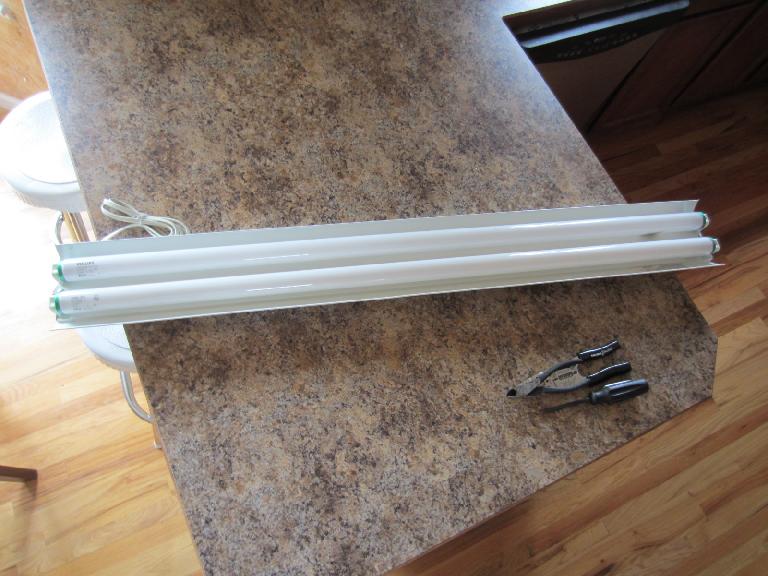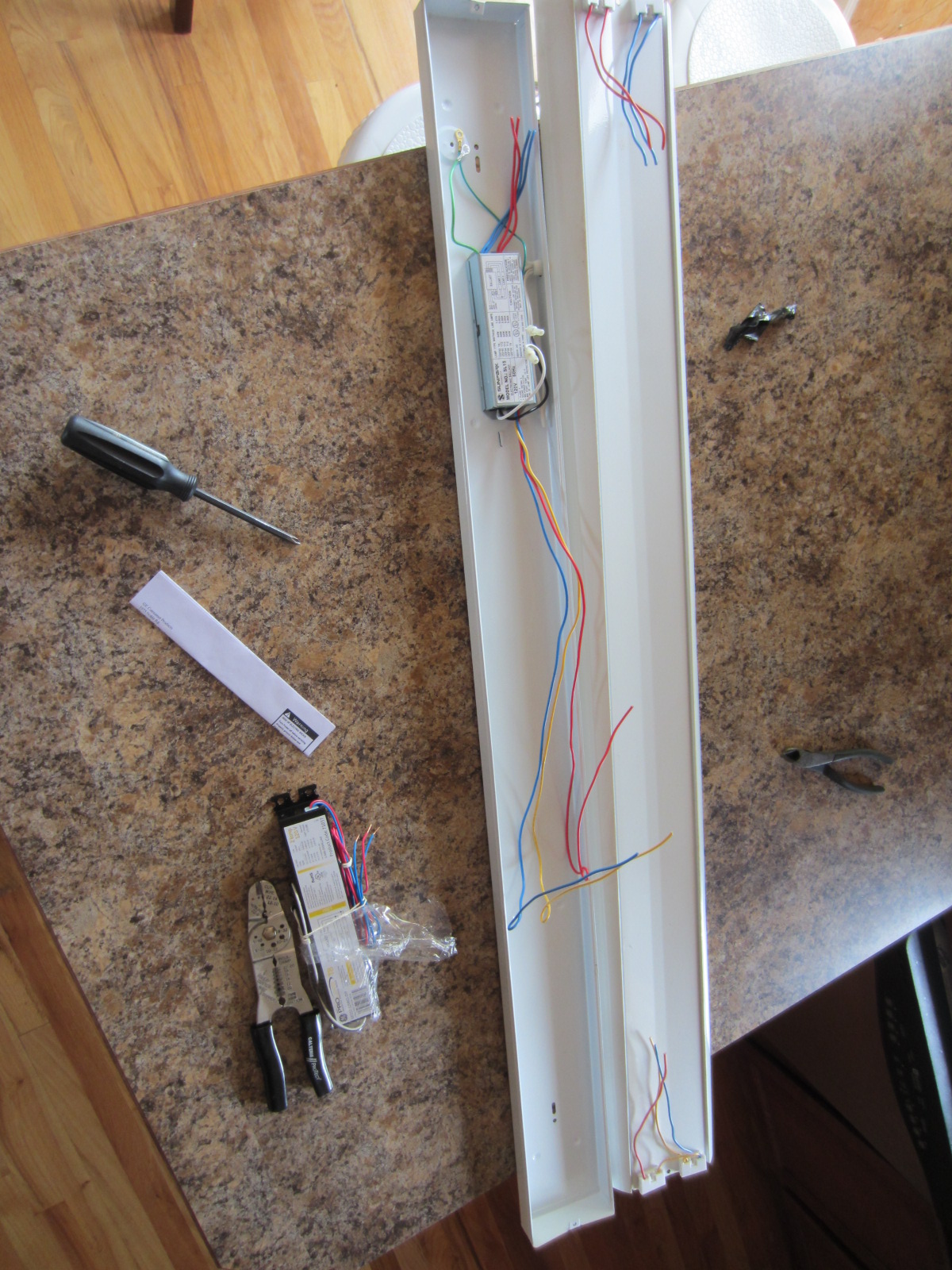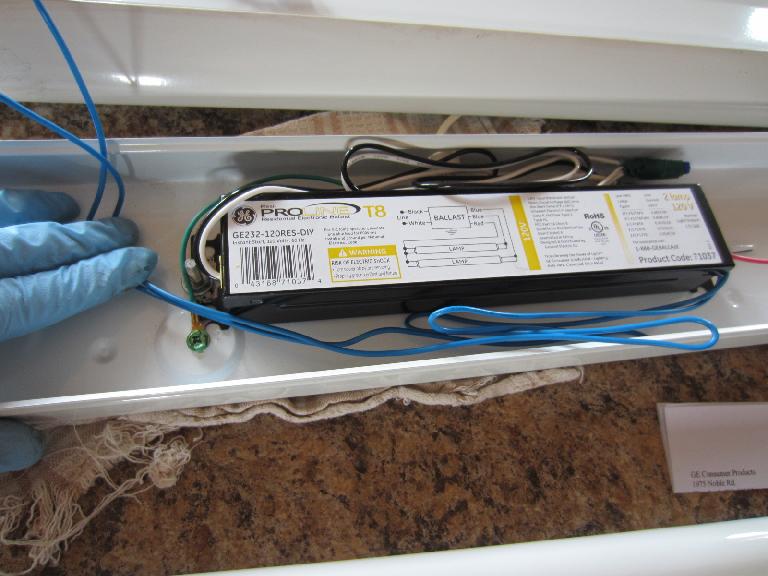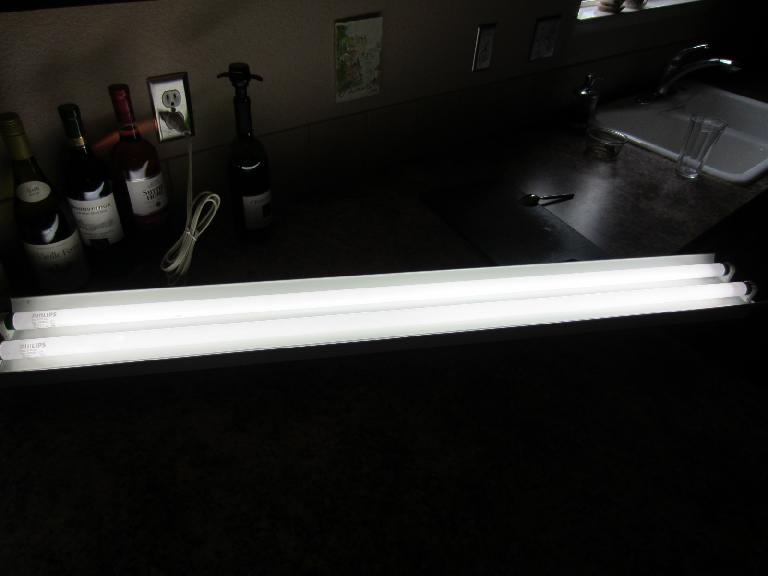T12 Fluorescent Light Replacement
Off, dim and flicker. You’d have think that Lucas, the Prince of Darkness, and associated British engineers had designed the fluorescent lighting system in the Garage Mahal 2. For several months, only one out of the four fluorescent tubes in the garage would illuminate upon flicking a light switch on the wall, and sometimes it felt that doing any sort of work in the garage was working by candlelight.
After a bit of fiddling to ensure that the problem wasn’t mechanical in nature, I determined that the ballasts in the 10-year-old light fixtures were dying, faulty, kaput. So I went over to Home Depot to look for a new one. To my amazement there were almost no ballasts for T12 (1-1/2″) fluorescent tubes. A helpful Home Depot employee told me why.
“Did you know that T12 bulbs are being phased out by July of this year?” he asked. “It might be worth just converting your lights to T8 (1 inch diameter).”
This was certainly news to me. Whereas it wouldn’t surprise me if the über-inefficient Thomas Edison-style incandescent lights become outlawed soon, we are talking about ubiquitous T12 fluorescent tubes that at one time have graced virtually every office and warehouse. (An aside: apparently, some U.S. states are phasing incandescent light bulbs by the end of this decade, and many countries around the world already have.)
As it turns out, despite being 50% larger in diameter than T8 bulbs, the T12 bulbs put out less light than T8 ones of similar wattage. Upon researching the matter further, I also learned the following:
- The manufacture of T12 ballasts has been banned in the U.S. by July 2010. The manufacture of T12 fluorescent tubes will be outlawed by July 2012.
- T12 bulbs require magnetic ballasts that operate at 60 hz. Whereas T8 bulbs can use electronic ballasts that operate at 12,000 hz. The higher frequency results in less flickering and better light quality.
- My old ballast actually was one of the few that could operate BOTH T12 and T8 bulbs, but it is broken. And it operates at only 60 hz.
- A 32-watt T8 bulb puts out about as much light as a 40-watt T12 bulb.
- The U.S. government was giving out rebates to upgrade your lighting. But the rebate program has already expired.
- Fluorescent bulbs have so many choices for color temperature! E.g., warm (3000 Kelvin), neutral (3500K), cool (4100K), very cool (5000K), and daylight (6200K).
- People in discussion groups seemed to prefer 5000K for garages (but warmer for the other areas of homes).
In light of the above, I decided to retrofit my existing light fixtures with T8 ballasts and bulbs.
This entailed removing the light fixtures from the garage, opening them up, removing the old T12 ballasts, drilling a hole for mounting the larger T8 ballast, connecting the wire leads per the wiring diagram on the new ballast, reassembling the light fixtures, and putting them back in the garage.
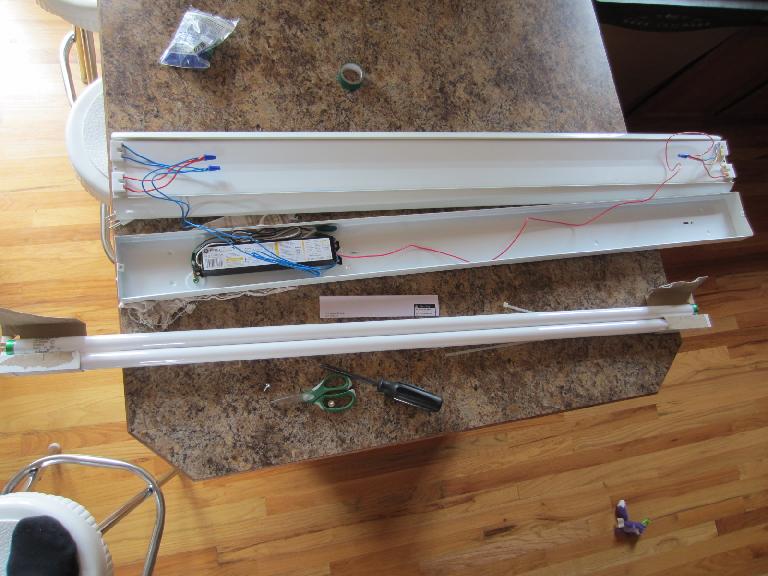
The first light fixture took me 1.5 hours to complete. I needed 45 minutes for the second. Each ballast was $14, and a pair of T8 bulbs about $10.
The result was quite nice, though. Now there is plenty of light in the garage, and a whiter glow too. In addition to the energy savings, there is less noise: the old T12 ballasts hummed a lot louder than the new T8 electronic ones.
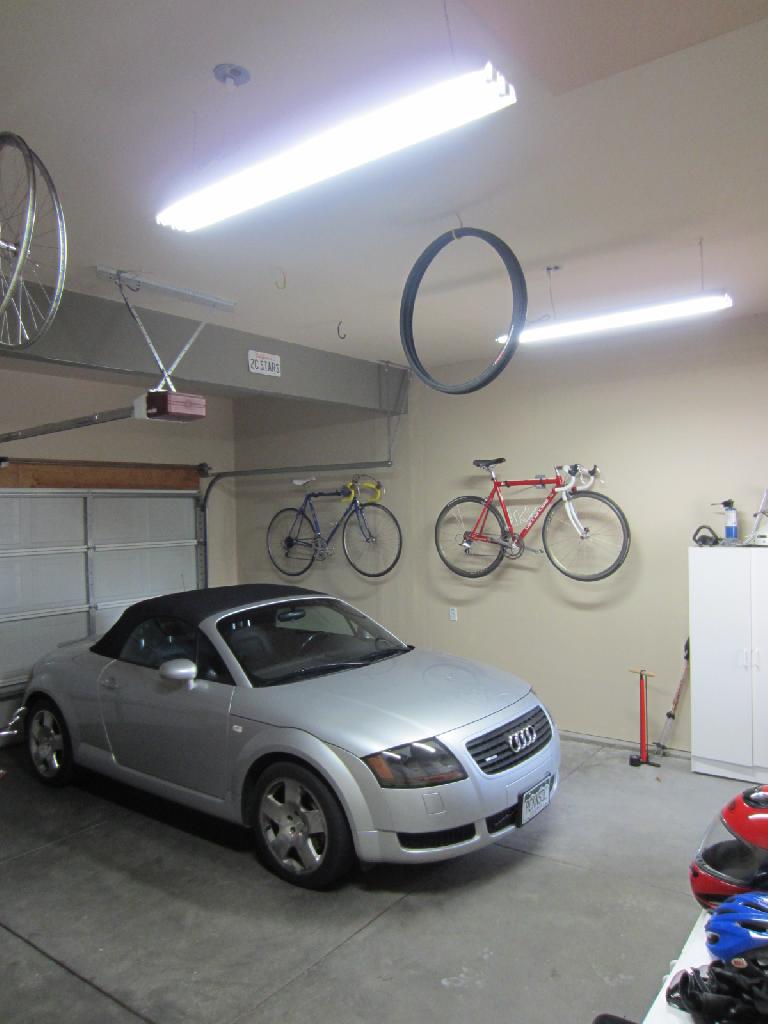
Energy Savings
According to Adventure Lighting Blog, there is more than just a 20% reduction in energy (=1 – 32W/40W). The savings, no doubt due in part to the more efficient electronic ballasts, is actually 35%:
A standard 4 lamp fixture, similar to what most every office in America uses, has a standard 40 watt T12 lamp on a standard magnetic ballast (which won’t be produced after June of 2010) and uses 172 watts of energy. The same fixture retrofitted with T8 lamps and a new electronic ballast uses 112 watts of energy—that’s a 35% reduction in energy usage!
The blog also claims,
Not only are you going to see a 35% reduction in energy consumption, you’ll also see a dramatic difference in light output. The Standard T12 lamp produces 2,650 initial lumens per lamp. The standard T8 produces 2,800 initial lumens per lamp, 6% brighter. But the standard T12 lamp produces 2,300 design lumens and the T8 produces 2,660 design lumens.
(Initial lumens is the average lumen output of the lamp after 100 hours of operation under controlled lab conditions. Design Lumens is the average lumen output of the lamp after 40% of its rated life.)
You can see that the T12 lamp loses 14% of its light output over the first 40% of its life, whereas the T8 only loses 5% of its light output. Combine that over 4 lamps and you have a loss of 1,400 lumens per fixture as compared to 560 lumens lost on a T8 fixture. I’ll get into why the T8 lamp is a better lamp as far as color later—but the 35% energy savings and a better lumen maintenance are 2 of the reasons why switching is better.
Lastly, it states,
The T8 lamp will also have an extra 4,000 hours of average rated life on a 3 hour start cycle.
